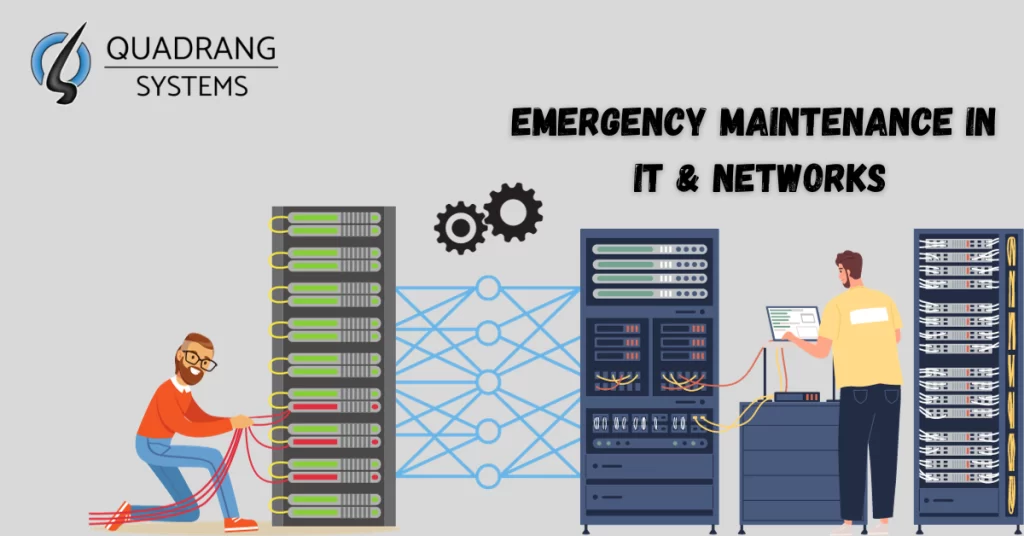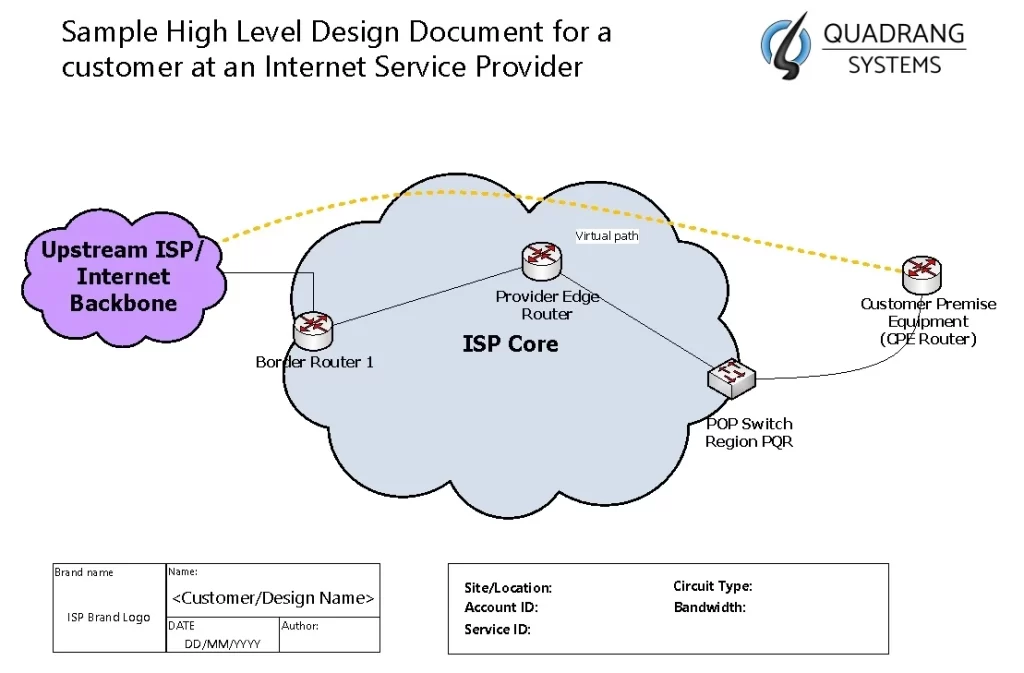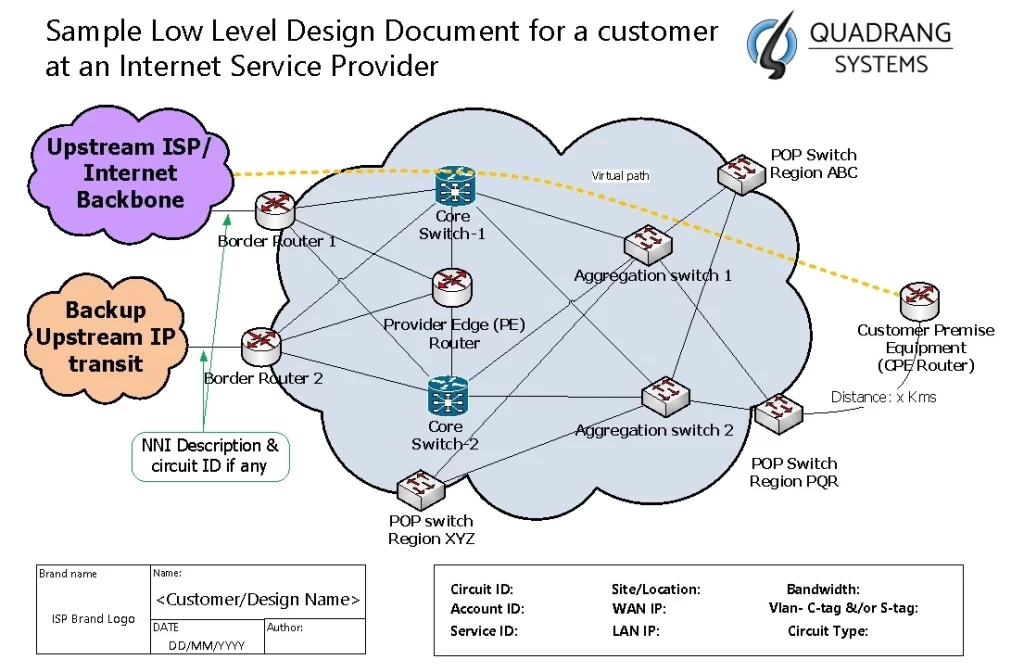7 Attributes of a Well Managed Network Operations Center
A Network Operations Center (NOC) is responsible for monitoring, managing, and maintaining a company’s network infrastructure. Operating a robust, reliable, and secure network is pivotal for small and medium enterprises (SMEs), software companies/IT organizations today. Network outages lead to major business disruption, loss of productivity, dissatisfied customers, and damage to the brand reputation. Establishing a 24/7 around-the-clock network operations center (NOC) to monitor and manage the network can help organizations minimize network issues. What attributes define a well-run NOC that delivers continuous high network availability and performance?
A full-fledged NOC usually consists of the following logical components:
1) Proactive Network Monitoring
At the core of an effective NOC lies continuous, proactive monitoring of the network infrastructure and all critical IT components such as servers, applications, websites, security devices, and cloud environments. Sophisticated tools continuously collect granular telemetry on key performance indicators (KPIs) like network latency, packet loss, interface errors, CPU/memory utilization, application response times, and website uptime. Intelligent correlation of the data and AI-based analytics provide actionable insights into early signs of problems. NOC engineers and network administrators review the monitoring dashboards to identify anomalies indicative of emerging issues – enabling them to get ahead of problems before users are impacted. Setting thresholds and configuring the system to automatically alert the NOC staff when metrics breach defined limits further bolsters proactive management. Besides infrastructure monitoring, well-run NOCs also track end user experience by emulating common user workflows. Proactive monitoring delivers greater network visibility for the NOC team while minimizing firefighting.
2) Technical Support and 24/7 Helpdesk
Outages, connectivity problems, security incidents or access issues can occur at any time. Users working overnight or over weekends still expect non-stop access and optimum performance of business applications. An effective NOC offers round-the-clock technical support and helpdesk services to quickly diagnose and resolve user problems. Support channels like phone, email, chat and knowledge base empower users to conveniently log tickets when facing difficulties. Automated ticket categorization and assignment ensure quick initial response while SLAs guarantee subsequent timely resolution. NOC technicians troubleshoot and fix basic issues directly or escalate complex problems to specialized engineers. Continuous availability of technical support minimizes user downtime and productivity loss. Sophisticated helpdesk software also provides useful metrics around support quality, engineer efficiency and knowledge gaps guiding training needs.
3) Incident, Problem & Change Management
Methodical tracking, documentation and management of faults, incidents and changes is the hallmark of a well-functioning NOC. Each event gets logged as a ticket in the helpdesk system with pertinent details around symptoms, diagnosis and remediation. Teams apply prescribed workflows for incident management from detection to temporary workaround to root cause analysis through permanent fix. Those requiring complex troubleshooting or changes get classified as “problems” for deeper investigation or routed into the change management and Change Advisory Board (CAB) process.
Subject matter experts review proposed changes, assess risk, specify test/rollback plans and grant approval prior to change implementation per schedule. Strict change control minimizes network disruption. The helpdesk system also facilitates information sharing between shifts supporting smooth handoffs. Powerful reporting dashboards provide insightful data on recurring incidents, change success rates, mean time to repair (MTTR) and other metrics that foster continual improvement of network operations.
4) Network Device Management
Smooth network operations rely on disciplined management of the core network infrastructure encompassing routers, switches, firewalls, load balancers and other devices. Establishing robust configurations, monitoring utilization and performance metrics, tracking inventory, keeping firmware updated and applying security patches are all imperative. NOC engineers fine tune parameters to optimize network traffic flow and minimize latency. They ensure availability of sufficient ports, uplink capacity and reserve hardware to accommodate business needs like adding new offices. Periodic audits validate that configurations follow the guideline standards disabling unutilized services being potential security risks. The NOC team also diligently documents the network components and topology facilitating appropriate change control. Their intimate networking knowledge coupled with management discipline significantly improves network resilience and availability.
5) Security Management
With cyberattacks growing in frequency and impact, securing the enterprise network and protecting business systems from threats is more critical than ever. NOCs in contemporary organizations manage various aspects of IT security including:
i) Endpoint Security:
Installing antivirus software on end user devices coupled with patch management ensures endpoints remain protected against malware and vulnerability exploits. NOC engineers distribute agent updates, verify protection status, and quarantine infected endpoints.
ii) Server & on-prem Security:
Hardening server configs, tracking certificates/protocols expiry, and promptly patching vulnerabilities minimizes attack surface on backend servers. NOC also ensures server access follows least privilege principle.
iii) Network Security:
NOC continuously monitors perimeter firewalls, web application firewalls, intrusion prevention systems and wifi networks to identify threats and anomalous traffic early. Timely threat intelligence updates, security policy administration and configuration audits further bolster security. SIEM consolidation coupled with SOC collaboration strengthens overall security posture.
6) Network Diagrams and Documentation
Meticulous documentation is crucial for efficiently running network operations as well as driving business continuity. NOC maintains updated high level designs logically depicting network interconnections between headquarters, branches, cloud environments and third parties. Low level physical and logical diagrams provide granular technical details around components like subnets, routing protocols, ACL configurations etc. Inventory spreadsheets list all devices/applications along with pertinent attributes. Network engineers rely extensively on this documentation to execute changes and troubleshoot issues rapidly.
NOC also maintains comprehensive functional specifications, configuration standards, policies/procedures and operational runbooks. Step-by-step runbooks on routine tasks (e.g. adding VLANs) or emergency procedures (e.g. fail over process) enable smooth administration even during crisis situations like key engineer absence. Clear documentation allows NOC team to manage the network infrastructure confidently minimizing fire drills. All documentation resides in centralized repositories with appropriate access controls facilitating single source of truth and easy change management as network evolves.
7) Reporting and Analytics
Reporting and analytics foster data-driven decision making critical for continual improvement of network management practices, infrastructure health and security posture. NOC teams generate utilization reports analyzing network traffic patterns, application usage metrics and bandwidth growth trends. These guide capacity planning by indicating upgrades to meet projected demands like adding WAN links. Application usage analytics provides insight into adoption levels directing enhancements. Travel trends analysis helps optimize VPN allocation for remote workforce during holiday seasons when more personnel work from home.
Security analytics identify suspicious patterns signaling attack attempts or policy violations. Detailed incident analysis reports document scope, severity, root cause and remediation for all major events – facilitating better preparedness. ILT driven analysis makes the network more resilient. Teams also pull helpdesk reports around outage duration, time to fix issues, engineer efficiency and solution accuracy to highlight areas for improving network support. Overarching reports on availability, latency and quality benchmarks help top management track NOC’s operational excellence objectively. Continual reporting empowers stakeholders to make informed decisions elevating network to meet business objectives.
Conclusion
In essence, round-the-clock monitoring, responsive user support, rigorous change control processes, disciplined infrastructure/security management and extensive analytics/reporting distinguish exemplary NOCs demonstrating the 7 traits elaborated. Well-defined workflows, documented procedures and automation further help the NOC teams maintain consistent network and application availability exceeding expectations for the always connected world of today’s digital business. Investing in 24/7 network command centers pays dividends lowering business risk and driving competitive advantage.










